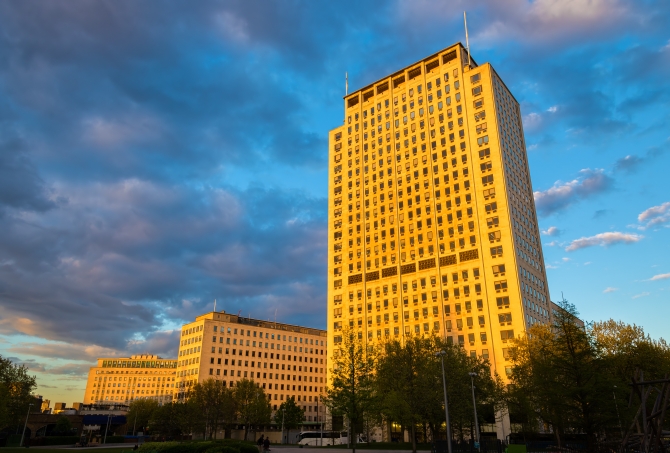Greater investor confidence is intensifying competition on London’s South Bank, says a commercial property expert who specialises in the market.

“South Bank has always been a challenging market to acquire in,” says Alastair Hilton, a partner at real estate advisor Union Street Partners. “This is partly due to its size – it comprises just 20m sq ft of office stock – and partly due to the significant number of assets held by non-real estate owners.”
Competition for any available asset has increased over the past two years. “Where previously you might expect half-a-dozen bidders, you will now see considerably more,” he adds, citing Almacantar’s recent record-breaking forward purchase of One and Two Southbank Place on the Shell Centre site (pictured) as an example of investor appetite.
Attempting to explain the strong appetite from overseas asset managers, Hilton says that as London has evolved, the South Bank has become an increasingly attractive long-term bet for investors. In many ways it is seen as an “overspill market” for the West End and the City, where demand perennially outstrips supply.
“Behind this,” he continues in a market update carried on the website of joint venture company Farebrother, “the UK funds continue to seek exposure but remain more risk-averse. Historically, their investment patterns have tended to follow the occupational market’s push south, but many have been reticent about placing capital too far from the river.
“As a result, UK fund exposure to the South Bank has been limited, but is beginning to reverse as fund managers such as M&G, Henderson, Standard Life, Aberdeen, CBRE GI and DTZIM are drawn to the high returns on offer.”
There is also greater confidence among UK Investors, he adds, that South Bank as a market will not retreat. “The better quality of real estate, a diverse mix of land uses, and most importantly a thriving occupational market have given the South Bank long-term stability … This is the paradigm shift that is reassuring UK institutions that it can reliably deliver mid-long term returns.”
And there is little to suggest that investor appetite in the South Bank will wane. As well as being one of the most geographically accessible markets within London, it remains one of the most underdeveloped.
“The challenge for investors is accessing the market and competing,” Hilton concludes. “Identifying off-market opportunities is the preference, but while the more mature locations such as London Bridge and Bankside are clearly defined in terms of ownership, peripheral locations such as Bermondsey are not and therefore present opportunities.
“It will be intriguing to see how both overseas and UK investors assess the prospects of these areas moving forward.”
Previous Post
Cornerstone fully lets City of London asset